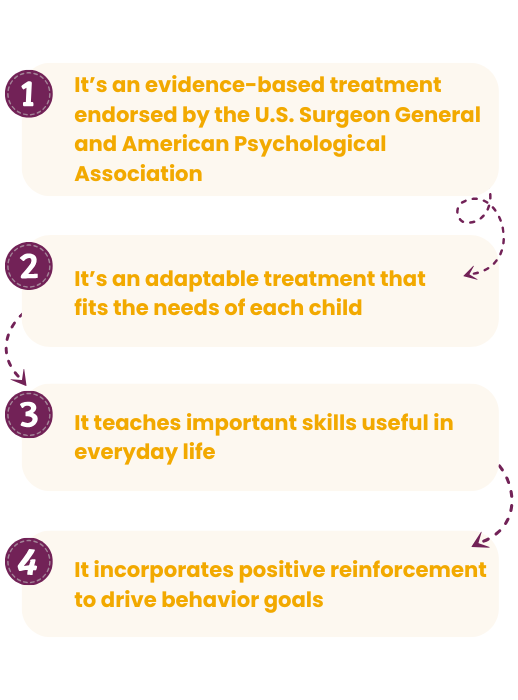Learn More
What Is ABA Therapy
Applied Behavior Analysis (ABA) therapy is an evidence-based therapy designed to help children with Autism Spectrum Disorder (ASD) learn and grow. It focuses on how children learn behaviors by looking at what happens before and after a behavior to understand why it occurs. ABA therapy makes learning more achievable by breaking down complex tasks into smaller and more manageable steps.
At HHF, our ABA therapy is rooted in a compassionate and personalized approach that focuses on:
- Child-Led Approach – Each session follows your child’s interests and pace to increase participation and motivation.
- Play-Based Therapy – We use toys as our tools and play to teach new skills in a natural and engaging setting.
- Positive Reinforcement – We celebrate progress by reinforcing positive behaviors to help your child build confidence and long-term success.
Our goal is to help each child reach their full potential—through joy, connection, and meaningful progress.

Reasons We Use ABA Therapy

ABA Therapy Principles
Individualized Approach
Every child with autism is unique, and so is their path to progress. ABA therapy begins with a comprehensive assessment by a Board Certified Behavior Analyst (BCBA), who designs a personalized autism treatment plan individualized to each child’s strengths, challenges, and goals.


Adaptable and Responsive
ABA therapy isn’t one-size-fits-all and treatment plans are not set in stone. As a child grows and responds to autism treatment, their plan is adjusted by the BCBA to keep pace with their development. This flexibility ensures ABA therapy always meets the child’s evolving needs.
Positive Reinforcement
At the heart of ABA therapy is positive reinforcement. When a child practices a targeted behavior, they receive a meaningful reward, so something they enjoy and value. This encouragement motivates continued progress and builds lasting skills.


Parental Involvement
Parents are key partners in the autism treatment process! While sessions are led by trained behavior therapists, families are included every step of the way. By learning and using ABA therapy strategies at home, parents help reinforce progress and create consistency across daily routines.
Intensive, Goal-Driven Support
ABA Therapy can be intensive and focused and typically ranges from 15 to 30 hours per week, depending on each child’s needs. While it requires a time commitment, ABA therapy is designed with clear goals and a long-term plan of helping children build real and lasting independence!

Benefits of ABA Therapy
ABA therapy offers meaningful and lasting support for children with autism by helping them build essential life skills in a way that’s personalized, positive, and practical. With the right approach, children can grow in confidence, communication, and independence—both in therapy and everyday life.

- Improved communication skills
- Better recognition and connection with others
- Clearer expression of wants and needs
- Greater focus and attention
- Reduced self-injurious behaviors
- Fewer tantrums and emotional outbursts
- Enhanced memory and learning skills
EXPLORE AUTISM TREATMENT FOR YOUR CHILD NOW!
Speak with us to see if our treatment is a fit for your family.
